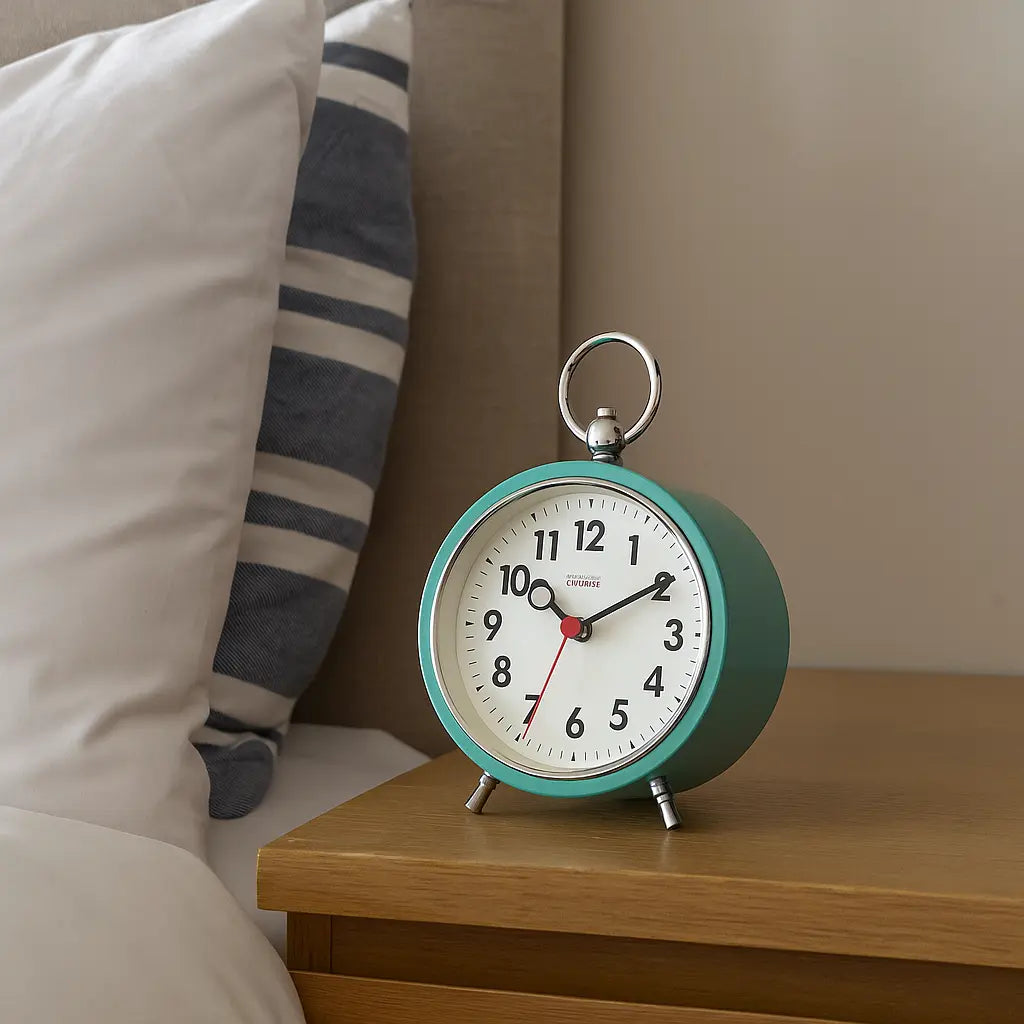How to Use an Analog Alarm Clock
Share
How to Use an Analog Alarm Clock
A simple guide for quieter mornings
Analog time still matters. A well-made analog alarm clock keeps time during power cuts, emits no blue light, and belongs on a nightstand that values rest over notifications. In a few short steps, you’ll learn exactly how to set—and trust—your clock, whether it’s a vintage flea-market find or a modern piece like the Cloudnola Railway Alarm Clock.
What You’ll Learn
How to set the time and alarm on an analog alarm clock
The function of dials, switches, and back-lighting
Tips for better sleep with screen-free timekeeping
Product examples that fit a quiet-home aesthetic
Setting Up Your Analog Alarm Clock
Step 1 – Set the Time
Turn the larger dial on the back clockwise until the hands reach the current time. Avoid turning time backward; the mechanism prefers a forward motion.
Step 2 – Set the Alarm
Rotate the smaller dial—or the ring on the face—until the alarm hand points to your chosen wake-up time.
Step 3 – Activate the Alarm
Flip the alarm switch to ON. A subtle indicator confirms it’s armed. On clocks such as the Studio Alarm Clock, the same switch controls a soft LED light.
Step 4 – Snooze or Turn Off
When the bell sounds, press the top button or slide the switch back to OFF. Pressing the button briefly also lights the dial for nighttime checks.
Analog Alarm Clock Tips
Keep distance: Placing the clock across the room encourages getting up instead of endless snoozing.
Stay dark: No screens means no blue-light interruptions to melatonin.
Go silent: Most Cloudnola models use a sweep movement, so no ticking breaks the quiet.
Analog Alarm Clock FAQs
Do analog alarm clocks tick loudly?
Many do. Ours doesn’t—quiet quartz sweep movement keeps the room calm.
What battery do they use?
Usually one AA. Replace it every 9 to 12 months.
Are they good for travel?
Yes. Compact designs like the Factory Alarm Clock slip easily into an overnight bag.
Featured Alarm Clocks
• Railway Alarm Clock – White: Silent movement + soft backlight
• Studio Alarm Clock – Pink: Rounded form, gentle tones
• Factory Alarm Clock – Black: Metal case, travel-friendly size
→ Shop All Alarm Clocks: https://cloudnola.com/collections/alarm-clocks


